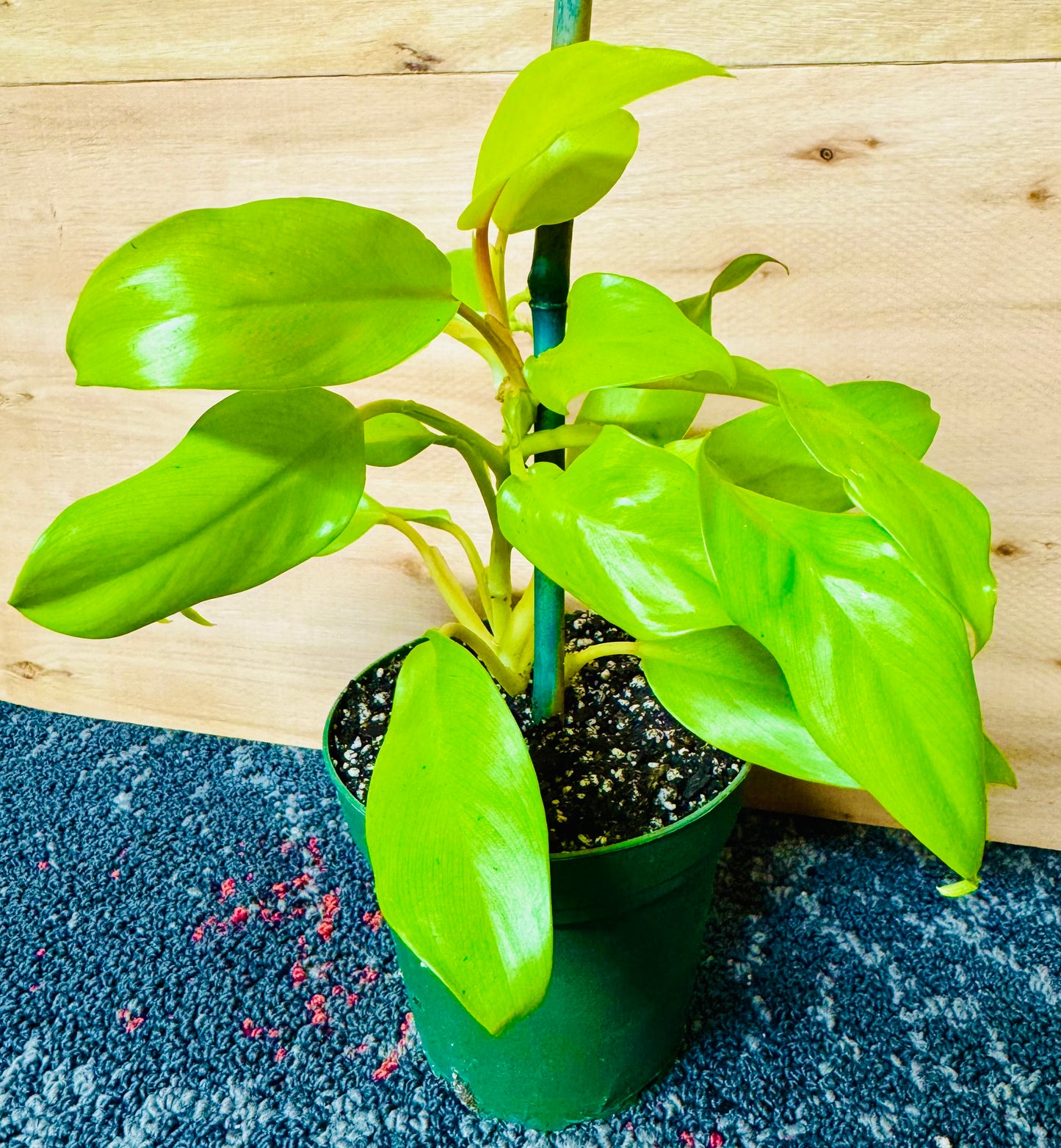Eden on Earth
10” Philodendron erubescens 'Gold' Blushing
10” Philodendron erubescens 'Gold' Blushing
Couldn't load pickup availability
The Ultimate Guide to Philodendron erubescens 'Gold' Care
Philodendron erubescens 'Gold' is a show-stopping climbing aroid, often sold under names like 'Golden Violin' or 'Painted Lady' (though 'Painted Lady' can be a different hybrid). It's prized for its vibrant, chartreuse to golden-yellow leaves that bring a splash of sunshine indoors. The new leaves often emerge in a brighter, almost neon yellow-orange hue.
1. Understanding Your Plant
-
Scientific Name: Philodendron erubescens (cultivar)
-
Origin: The parent species, P. erubescens, hails from the tropical rainforests of Colombia. This means your golden variety craves warmth, high humidity, and the type of dappled light found under a forest canopy.
-
Growth Habit: This is a climbing philodendron. To achieve the largest and most impressive leaves, it needs something to climb. Without support, the leaves will remain smaller, and the plant will trail or sprawl.
2. Core Care Requirements
💡 Light
-
Ideal: Bright, indirect light is crucial for maintaining its vibrant golden color. An east-facing window is perfect. In a south or west-facing room, it should be placed far enough away that the sun's rays do not hit it directly.
-
Too Little: In lower light, the brilliant yellow color will fade to a duller lime green.
-
Too Much: Direct sun will quickly scorch the leaves, leaving brown, burnt patches.
💧 Watering
-
When to Water: Water when the top 1-2 inches of the soil feel dry. It's better to let it dry slightly than to keep it constantly wet.
-
How to Water: Provide a thorough watering until it flows out the drainage holes. Tip out any standing water from the saucer to prevent the roots from sitting in water, which leads to root rot.
-
Frequency: Adjust based on the season. It will need more frequent watering during its active growth period in spring and summer.
🌱 Soil
-
Perfect Mix: Like most aroids, it needs a chunky, airy, and well-draining mix. You can buy a specialty aroid mix or create your own by blending:
-
1 part quality potting soil
-
1 part orchid bark
-
1 part perlite
-
-
Why it Works: This recipe ensures that the roots get plenty of oxygen while the mix retains just enough moisture.
🌡️ Temperature & Humidity
-
Temperature: Prefers warm conditions, ideally between 65-85°F (18-29°C). Keep it away from cold drafts and sudden temperature drops.
-
Humidity: High humidity (60%+) will result in a healthier, more robust plant. To increase humidity, you can use a humidifier, group plants together, or use a pebble tray.
3. Growth and Maintenance
🌿 Fertilizing
-
What to Use: Use a balanced liquid fertilizer diluted to half-strength.
-
How Often: Feed the plant every 4-6 weeks during the spring and summer. Hold off on fertilizing during the fall and winter.
🧗♀️ Support and Training
-
Essential for Mature Growth: Providing a moss pole or wooden trellis is the best way to encourage large, healthy leaves.
-
How to Do It: Gently secure the main stems to the support. If using a moss pole, misting it regularly will encourage the plant's aerial roots to grow into it, providing extra support and moisture.
✂️ Pruning
-
Prune any yellow or dead leaves as they appear. You can also prune the vines to encourage bushier growth or to control the plant's size. The cuttings are easy to propagate.
🪴 Repotting
-
Frequency: Repot every 1-2 years, or when the plant becomes root-bound. A 10-inch plant is mature and may need repotting annually if it's a fast grower.
-
Choosing a Pot: Select a pot that is 2 inches larger in diameter than its current one. Ensure it has good drainage.
4. Troubleshooting Common Issues
-
Color Fading to Green: This is a clear sign the plant is not receiving enough bright, indirect light.
-
Brown Spots on Leaves: Could be sunburn from too much direct light.
-
Yellowing Lower Leaves: Can indicate overwatering. Check the soil moisture.
-
Pests: Be vigilant for common houseplant pests like spider mites and mealybugs. Check under leaves and in crevices.
⚠️ A Note on Toxicity
-
All parts of this philodendron are toxic to cats, dogs, and humans if ingested, due to calcium oxalate crystals. Keep it safely out of reach.


